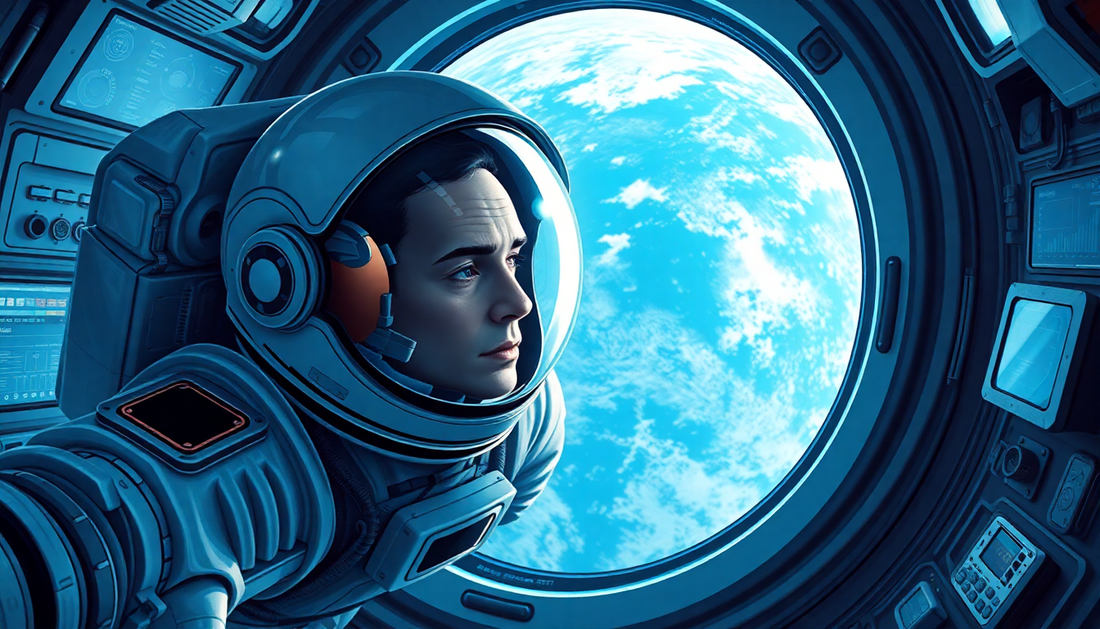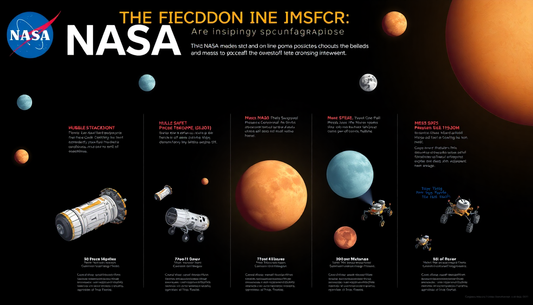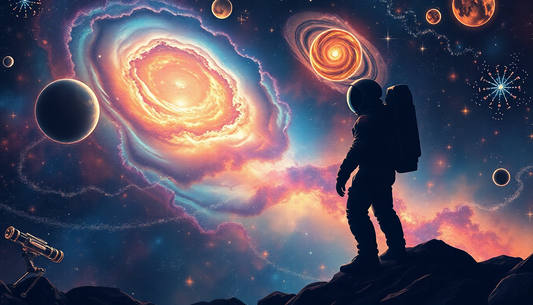
Life Beyond Earth: Exploring the Realities of Astronaut Existence in Space
As the sun rises over the vast expanse of the Earth's atmosphere, a team of highly trained individuals prepares to embark on a journey unlike any other. These are the astronauts, the explorers of the final frontier, who have dedicated their lives to unraveling the mysteries of the cosmos. But what does it truly mean to live and work in the unforgiving environment of space?
In this comprehensive blog post, we will delve into the intricate details of an astronaut's daily life, from the moment they strap into their spacecraft to the challenges they face during their time aboard the International Space Station (ISS) or other extraterrestrial outposts. Through this exploration, we will gain a deeper understanding of the physical, mental, and emotional demands that come with living in the vastness of space.
The Journey Begins
The journey for an astronaut starts long before they ever leave the ground. The selection process is rigorous, with only a small fraction of applicants making the cut. Once selected, they undergo extensive training, both physical and mental, to prepare for the unique challenges of spaceflight.
From mastering the intricate systems of their spacecraft to honing their problem-solving skills, astronauts must be ready to handle any situation that may arise during their mission. This training often includes simulations of emergency scenarios, allowing them to practice their responses and develop the necessary reflexes to keep themselves and their crew safe.
The Launch
The moment of launch is a thrilling and nerve-wracking experience for any astronaut. As the powerful rocket engines ignite, the spacecraft is propelled into the sky, leaving the familiar confines of Earth behind. The intense acceleration and vibrations can be physically and mentally taxing, but the astronauts must remain calm and focused, monitoring their systems and ensuring a safe ascent.
Once the spacecraft reaches the desired altitude and separates from the launch vehicle, the astronauts experience the sensation of weightlessness, or microgravity. This sudden shift in their physical environment can be disorienting, and it takes time for the body to adapt to the new conditions.
Life Aboard the International Space Station
For many astronauts, the International Space Station (ISS) serves as their home away from home during their mission. This orbiting laboratory, a collaborative effort between several nations, provides a unique platform for scientific research and technological advancements.
Adapting to Microgravity
One of the most significant challenges faced by astronauts aboard the ISS is the adaptation to microgravity. Without the constant pull of Earth's gravity, the human body undergoes a series of physiological changes, including muscle atrophy, bone loss, and shifts in fluid distribution.
To combat these effects, astronauts must engage in a rigorous exercise regimen, using specialized equipment to maintain their physical fitness. They also undergo regular medical examinations and participate in various experiments to help scientists better understand the long-term impacts of living in a microgravity environment.
Everyday Tasks
Performing even the most basic tasks, such as eating, sleeping, and personal hygiene, becomes a unique challenge in the microgravity environment of the ISS. Astronauts must learn to navigate their living quarters, secure themselves to surfaces, and use specialized tools to accomplish these everyday activities.
For example, astronauts must use a combination of velcro, straps, and tethers to secure themselves to their sleeping quarters, which are essentially small compartments rather than traditional beds. Eating requires the use of specialized utensils and containers to prevent food from floating away, and personal hygiene routines involve the use of specialized showers and toilets designed for the microgravity environment.
Scientific Research and Experiments
The primary purpose of the International Space Station is to serve as a platform for scientific research and technological advancements. Astronauts aboard the ISS are responsible for conducting a wide range of experiments, from studying the effects of microgravity on biological systems to testing new technologies that could benefit life on Earth.
These experiments often require the astronauts to work with delicate equipment, perform complex procedures, and carefully document their observations. The results of these studies can have far-reaching implications, from improving medical treatments to advancing our understanding of the universe.
Psychological Challenges
While the physical demands of living in space are significant, the psychological challenges faced by astronauts can be equally, if not more, daunting. Isolation, confinement, and the constant awareness of the inherent risks of spaceflight can take a toll on an astronaut's mental well-being.
Isolation and Confinement
The ISS, while a marvel of engineering, is a relatively small and confined living space. Astronauts must share close quarters with their crewmates for extended periods, often with limited opportunities for privacy or personal time. This can lead to feelings of isolation and claustrophobia, which can be exacerbated by the lack of familiar sights, sounds, and sensations from Earth.
To combat these psychological stressors, astronauts engage in regular communication with their families and ground support teams, as well as participate in recreational activities and team-building exercises aboard the station.
Dealing with Stress and Anxiety
The inherent risks of spaceflight, such as the possibility of equipment failure, medical emergencies, or even the threat of meteoroid impacts, can weigh heavily on the minds of astronauts. They must be prepared to remain calm and focused in the face of these potential crises, as their actions and decision-making can have life-or-death consequences.
To manage these stressors, astronauts receive extensive training in stress management techniques, including meditation, cognitive-behavioral therapy, and emergency response protocols. They also have access to mental health professionals who provide ongoing support and guidance throughout their mission.
The Return to Earth
After months of living and working in the microgravity environment of the International Space Station, the time comes for the astronauts to return to Earth. This final phase of the mission can be just as challenging as the initial launch, as the body must readapt to the pull of gravity.
The Descent and Landing
The descent back to Earth is a delicate and complex process, requiring the astronauts to carefully monitor their spacecraft's systems and maintain their composure during the intense deceleration and atmospheric re-entry. The sudden return to Earth's gravity can be physically and mentally taxing, as the body struggles to adjust to the familiar sensations of weight and movement.
Post-Flight Recovery
Once the astronauts have safely landed, they must undergo a comprehensive medical evaluation and a gradual rehabilitation process. This is necessary to assess any potential long-term effects of their time in space and to help their bodies and minds readjust to the demands of life on Earth.
During this recovery period, astronauts may experience a range of physical and emotional challenges, from muscle weakness and balance issues to feelings of disorientation and isolation. They work closely with medical professionals and support staff to ensure a smooth and successful transition back to their everyday lives.
Conclusion
The life of an astronaut is one of extraordinary challenges, both physical and mental. From the rigorous training and intense launch to the daily tasks and psychological demands of living in space, these individuals push the boundaries of human endurance and exploration.
As we continue to push the limits of our understanding of the cosmos, the role of the astronaut will only become more crucial. By sharing their stories and experiences, we can gain a deeper appreciation for the sacrifices and achievements of these remarkable individuals, and be inspired to continue our journey of discovery beyond the confines of our planet.


